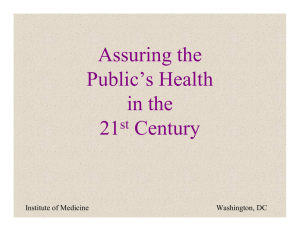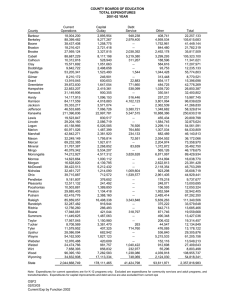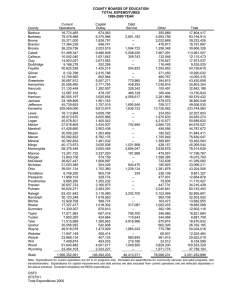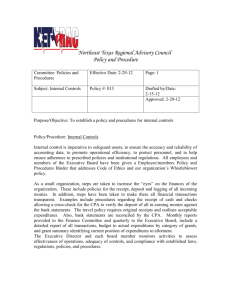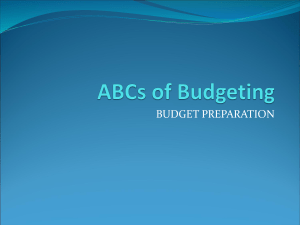DEFINITIONS FOR FINANCIAL INFORMATION
advertisement
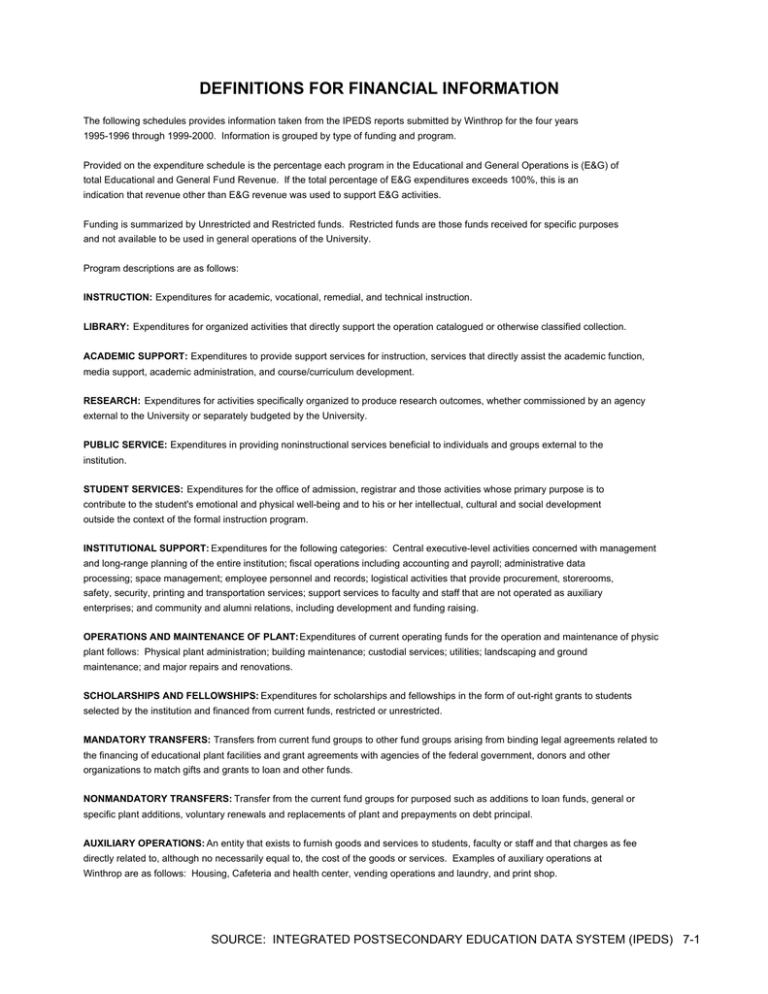
DEFINITIONS FOR FINANCIAL INFORMATION The following schedules provides information taken from the IPEDS reports submitted by Winthrop for the four years 1995-1996 through 1999-2000. Information is grouped by type of funding and program. Provided on the expenditure schedule is the percentage each program in the Educational and General Operations is (E&G) of total Educational and General Fund Revenue. If the total percentage of E&G expenditures exceeds 100%, this is an indication that revenue other than E&G revenue was used to support E&G activities. Funding is summarized by Unrestricted and Restricted funds. Restricted funds are those funds received for specific purposes and not available to be used in general operations of the University. Program descriptions are as follows: INSTRUCTION: Expenditures for academic, vocational, remedial, and technical instruction. LIBRARY: Expenditures for organized activities that directly support the operation catalogued or otherwise classified collection. ACADEMIC SUPPORT: Expenditures to provide support services for instruction, services that directly assist the academic function, media support, academic administration, and course/curriculum development. RESEARCH: Expenditures for activities specifically organized to produce research outcomes, whether commissioned by an agency external to the University or separately budgeted by the University. PUBLIC SERVICE: Expenditures in providing noninstructional services beneficial to individuals and groups external to the institution. STUDENT SERVICES: Expenditures for the office of admission, registrar and those activities whose primary purpose is to contribute to the student's emotional and physical well-being and to his or her intellectual, cultural and social development outside the context of the formal instruction program. INSTITUTIONAL SUPPORT: Expenditures for the following categories: Central executive-level activities concerned with management and long-range planning of the entire institution; fiscal operations including accounting and payroll; administrative data processing; space management; employee personnel and records; logistical activities that provide procurement, storerooms, safety, security, printing and transportation services; support services to faculty and staff that are not operated as auxiliary enterprises; and community and alumni relations, including development and funding raising. OPERATIONS AND MAINTENANCE OF PLANT: Expenditures of current operating funds for the operation and maintenance of physic plant follows: Physical plant administration; building maintenance; custodial services; utilities; landscaping and ground maintenance; and major repairs and renovations. SCHOLARSHIPS AND FELLOWSHIPS: Expenditures for scholarships and fellowships in the form of out-right grants to students selected by the institution and financed from current funds, restricted or unrestricted. MANDATORY TRANSFERS: Transfers from current fund groups to other fund groups arising from binding legal agreements related to the financing of educational plant facilities and grant agreements with agencies of the federal government, donors and other organizations to match gifts and grants to loan and other funds. NONMANDATORY TRANSFERS: Transfer from the current fund groups for purposed such as additions to loan funds, general or specific plant additions, voluntary renewals and replacements of plant and prepayments on debt principal. AUXILIARY OPERATIONS: An entity that exists to furnish goods and services to students, faculty or staff and that charges as fee directly related to, although no necessarily equal to, the cost of the goods or services. Examples of auxiliary operations at Winthrop are as follows: Housing, Cafeteria and health center, vending operations and laundry, and print shop. SOURCE: INTEGRATED POSTSECONDARY EDUCATION DATA SYSTEM (IPEDS) 7-1
